Story highlights
On every continent, countries have crossed swords over the origin of traditional dishes
Chile and Peru fight over potatoes
South Korea feuds with Japan for kimchi
A Lunar New Year delicacy has caused issues for Singapore/Malaysia relations
Few issues spark more heated debates than the subject of food.
You don’t need to be a bad chef to know that – just read the comments on this list of the world’s 50 most delicious foods, or food critic Jason Sheehan’s thoughts on why people take their food so seriously.
But sometimes these arguments spread beyond the safety of an internet comments box.
In every continent in every era, countries have crossed swords over the origin of traditional dishes.
Feuds over food sovereignty have even devolved into diplomatic rifts.
Threats have been made.
Political alliances have been broken.
For proof that people were given mouths for only two main reasons – to eat and to argue about what they just ate – read on.
1. Lebanon and Israel: The hummus humdinger
“Why are you so anti-hummus? Isn’t pita bread the real enemy?” Bruno, Sacha Baron Cohen’s ditzy designer character, once asked in a debate about the Palestinian Islamist political party Hamas.
Notwithstanding Bruno’s hilarious ignorance, he did at least bring the politicized chick pea dish into the spotlight.
In 2008, the president of the Association of Lebanese Industrialists launched a lawsuit against Israel for infringement of food copyright laws.
Lebanon’s government also petitioned the European Union to classify hummus as a uniquely Lebanese food.
Lebanese have complained about the commercialization of this savory dip, known as “mezze” (appetizers in Lebanese), under the label “Israeli cuisine” in Western stores.
Perhaps it’s less political and more financial – sales of hummus are estimated at around US$1 billion a year.
Both countries took their legal disagreement to the kitchen.
Israelis first broke the record of the largest plate of hummus in January 2010 by putting together some 4,082 kilos of the stuff.
In response, about 300 Lebanese chefs set the Guinness World Record for the largest hummus plate in May 2010, with a humongous 10,450-kilo dish.
Israel then started selling postcards at tourist kiosks all over the country calling hummus “Israel’s National Snack.”
The truth is, there is no real winner.
Hummus has been traced to the time of Saladin, a 12th-century sultan, well before the establishment of the states of Israel and Lebanon.
Try it
Abu Shaker, 29 Hameginim St., Haifa, Israel; +972 446 6181; 6 a.m.-6 p.m.
Le Chef, rue Gouraud, Gemmayzeh, Beirut, Lebanon; +961 144 6769; Monday-Saturday, 6 a.m.-6:30 p.m.
MORE: Where to find Israeli food and culture in Tokyo
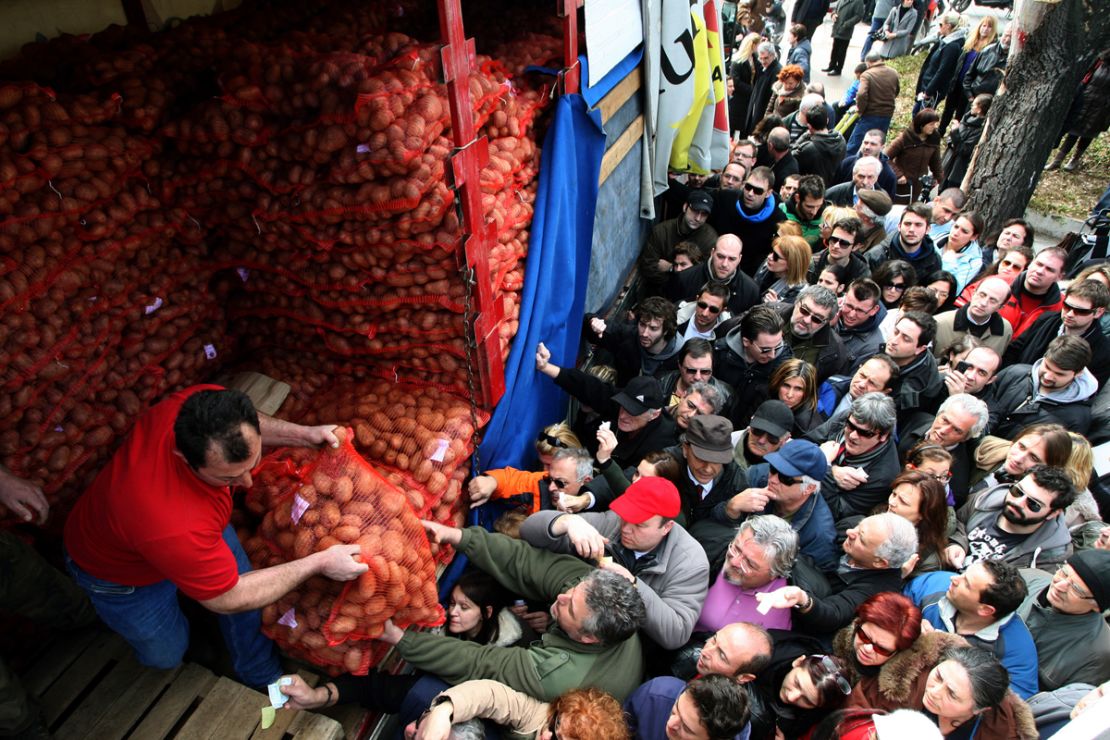
2. Chile and Peru: The potato battle
In addition to quarreling over the naming rights to pisco and the provenance of the charango, the humble spud has also become a “hot potato” between Chile and Peru.
This dispute over its origins started when professor Andres Contreras from Chile’s Austral University tried to register more than 280 potato varieties from the southern island of Chiloe as originating in Chile.
This island had already been identified as the birthplace of the potato in Pablo Neruda’s 1955 book “Oda a la Papa.”
In June 2008, Marigen Hornkohl, Chile’s then agriculture minister, proclaimed that: “99% of the world’s potatoes have some type of genetic link to potatoes from Chile.”
The claim wasn’t completely bonkers.
Several universities in recent years have confirmed Chile is the potato’s global home and the genetic link is around 90%.
Unconvinced, Peru threatened to take the case to the United Nations.
For Peruvians, the potato was discovered by the troops of Spanish Colonel Pizarro and comes from the Andes near Lake Titicaca, most of which is located in modern Peru.
Peruvian Foreign Minister Jose Antonio Garcia Belaunde was proud to acknowledge that, “The Peruvian potato saved Europe from hunger.”
To make matters worse, Bolivia made it a tripartite quarrel, when it claimed to have found traces of older tuber in its soil.
In the Andes, the potato is celebrated in carnivals with traditional dance and music.
In Peru, it’s publicized by cries of “La papa es Peruana” (The potato is Peruvian).
But one village in Peru’s Cajamarca region took things a bit far when it tried to emulate the popular tomato-throwing festival La Tomatina in Spain, replacing soft, squishy tomatoes with potatoes.
Dozens of people were injured.
Find them
La Vega market, Nueva Rengifo, Lopez de Bello & Salas, Santiago, Chile; +56 2732 9492; Monday-Saturday, 6 a.m.-6 p.m., Sunday 6 a.m.-3 p.m.
Parque de la Papa, three kilometers from Pisaq, Cusco, Peru; +51 8424 5021
More: 27 sights to remind you how incredible Earth is
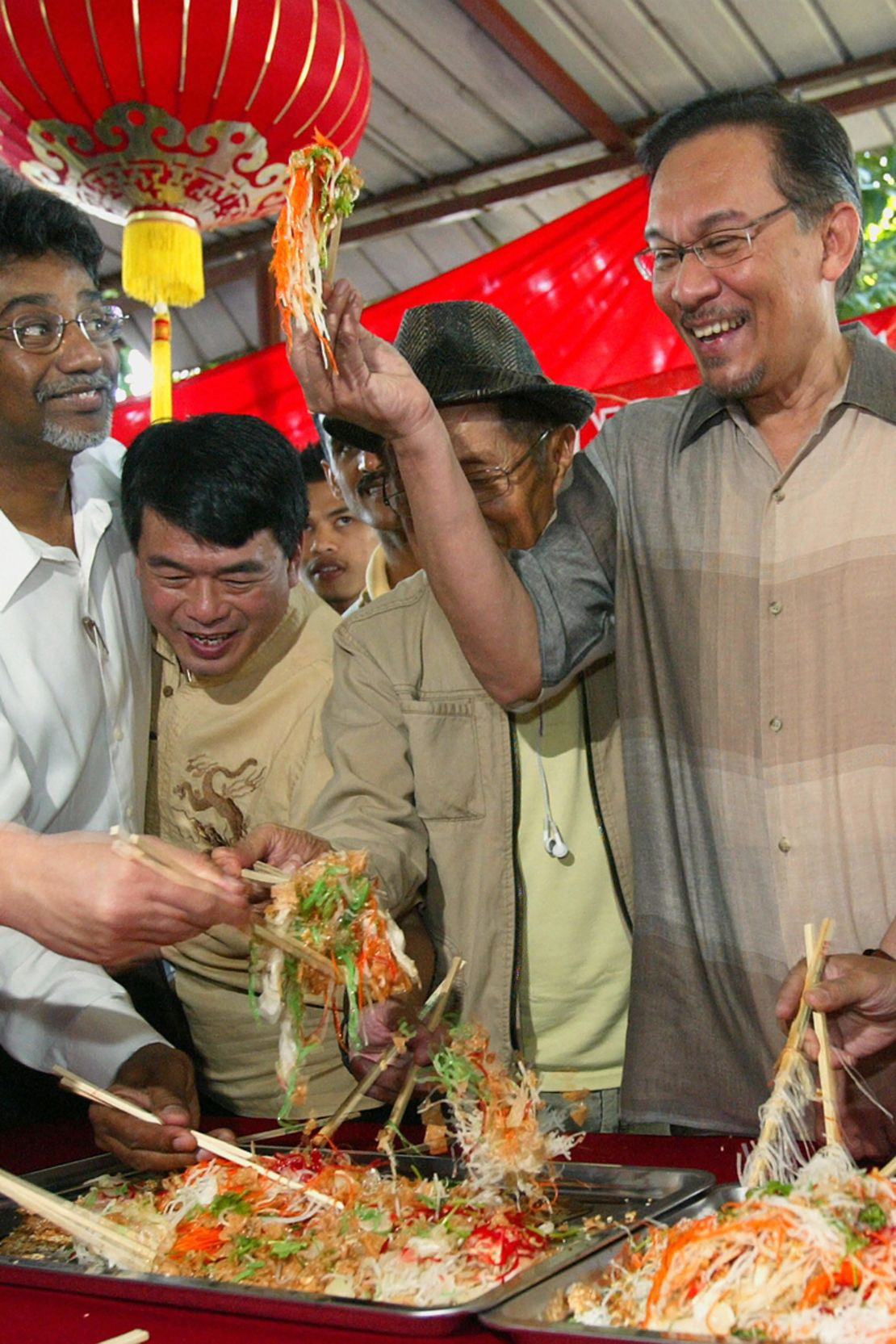
3. Malaysia and Singapore: The yee sang/yusheng dispute
Singapore and Malaysia have previously butted heads over land and water.
But there’s another bone of contention – yusheng (in Singapore) or yee sang (in Malaysia).
Made of thinly sliced pieces of raw fish and shredded vegetables, the dish is a Lunar New Year delicacy commonly served as an appetizer to bring good luck.
The Malaysian government took what it considered the innocent step in 2009 of adding yee sang to its list of national dishes.
Then one man decided it was time for a dispute.
Singaporean professor Tan Wee Cheng set up a special Facebook page in 2010 dedicated to the inclusion of yusheng as Singapore’s national dish in the UNESCO list of intangible cultural heritage.
“We cannot continue to let other countries hijack our food,” responded Malaysian Tourism Minister Datuk Seri Dr Ng Yen Yen.
Malaysians even called Singapore’s attempt to patent yee sang as a local delicacy a “deliberate violation of rights.”
Not wanting to miss out on a skirmish, even Japan tried to get involved.
“If anyone were to be qualified to apply for the yee sang culture, it must be the Japanese, as they started consuming raw fish centuries ago,” suggested Mei Shu Zhen, a Japanese columnist.
It’s difficult to determine the origin of this dish because it originated from a Cantonese recipe that both Malaysia and Singapore later polished.
Chinese settled in both countries, and both were British colonies, so this is another food dispute that will likely go on for some time.
Try it
Crystal Jade Palace, 391 Orchard Road, No. 04-19 Ngee Ann City, Singapore; +65 6735 2399; 11 a.m.-3 p.m. and 6 p.m.-10:30 p.m.
Sek Yuen Restaurant, 313-315 Jalan Pudu, Kuala Lumpur, Malaysia; +63 9222 9457; 11 a.m.-3 p.m. and 6 p.m.-10 p.m.; closed Monday
MORE: 40 Singapore foods we can’t live without
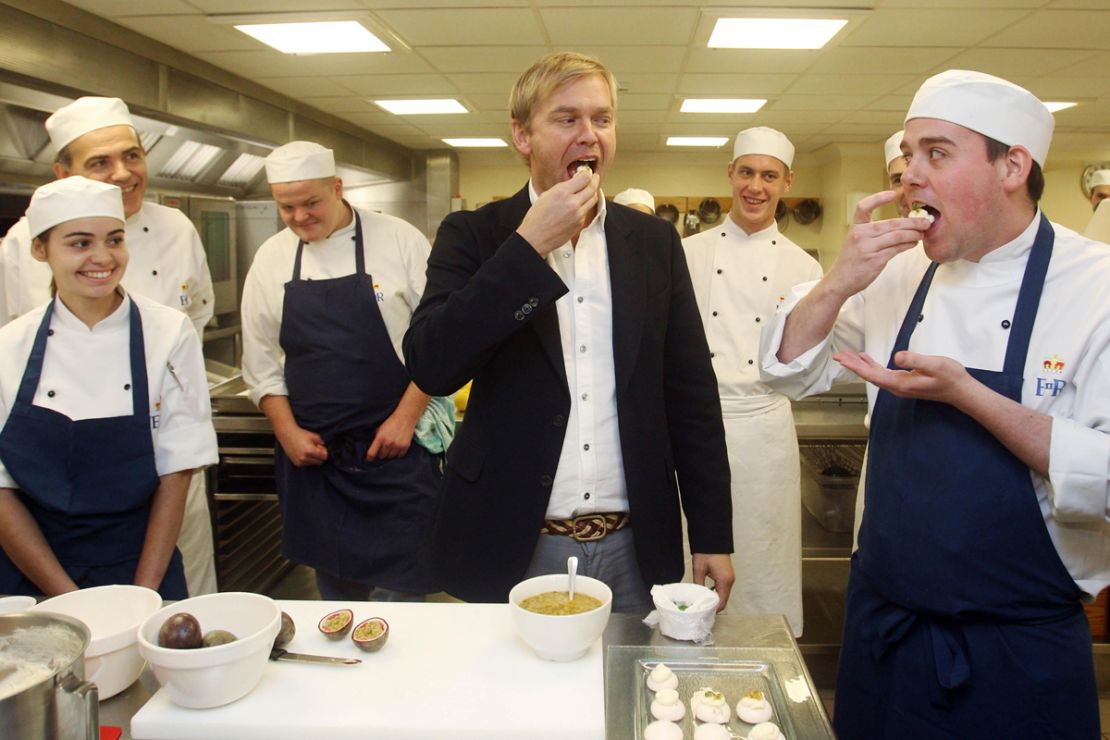
4. Australia and New Zealand: The pavlova spat
When it comes to pavlova, everybody wants a slice … of its history.
The origin of this cloud-like meringue-based dessert topped with fresh fruit and whipped cream is the center of a dispute between Australia and New Zealand.
One thing we know is this fluffy dessert that melts on the tongue was named after the Russian ballet dancer Anna Pavlova, as a testimony to her lightness, airiness and grace.
The problem is she toured both Australia and New Zealand in the 1920s and the issue of the origin of the eponymous dessert has become a serious matter of national pride.
When conservative John Key was elected as New Zealand’s prime minister in 2008, one of his first acts was to dismiss Australia’s pavlova claim as “totally ridiculous.”
The Australian National Dictionary describes pavlova as “a famous Australian dessert, named due to its mouth-watering properties.”
But professor Helen Leach, a culinary anthropologist at New Zealand’s University of Otago, compiled a library of cookbooks containing 667 pavlova recipes.
“I can find at least 21 pavlova recipes in New Zealand cookbooks by 1940, which was the year the first Australian ones appeared,” she concluded.
To challenge Aussies over the dish’s origin, Kiwi students at the Eastern Institute of Technology created the world’s largest pavlova (64 meters long) in 2005.
In 2010, a 50-square-meter rugby-shaped pavlova (made with 10,000 egg whites and more than 600 kilos of sugar) was cooked in Christchurch.
It was said at the time to be capable of feeding 10,000 people.
Try it
Pavlova Pantry, Lvl 31/ 88 Phillip St., Sydney; +61 3003 02162
Cowell’s Genuine Pavlova, 7 Vire St., Dunedin, New Zealand; +64 800 664 466
MORE: New Zealand’s 10 best restaurants
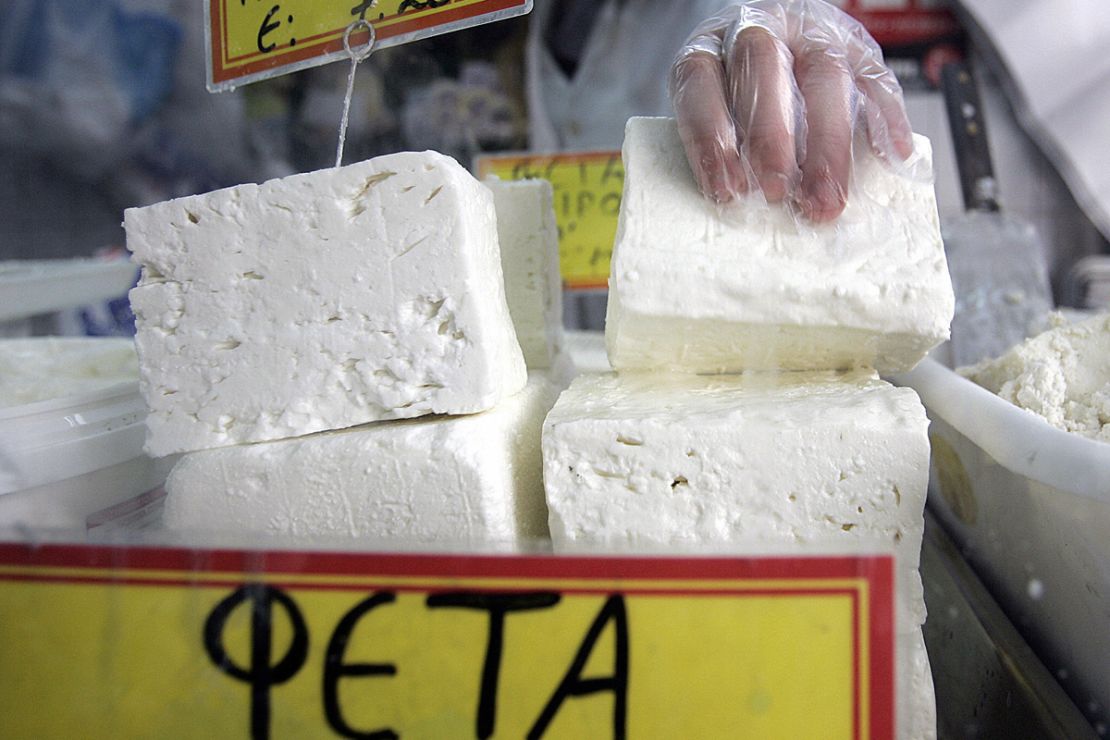
5. Greece and the EU: The feta cheese feud
The case over the origin of feta has cheesed off many EU countries in a feud that raged for almost 20 years.
This cheese-naming debacle went to court because Greeks wanted feta to be an official national product and to have the exclusive use of the feta label.
The first country to make a fuss was Denmark, Europe’s second largest feta cheese producer.
Bulgaria, which uses feta cheese in its popular Shopska salad, also made cultural claims to feta.
To defend their case, the Danish and German governments argued that feta is a generic designation and does not relate to a specific geographical area.
Denmark has made feta since 1963, the Netherlands since 1981 and Germany since 1985.
The long-running disagreement has become an issue of national pride and culture.
Greek Agriculture Minister Giorgos Drys declared the creation of “merciless feta police” in 2003, when shipments of contaminated feta cheese produced in Greece were found in Norway.
After legal wrangling over more than a decade, the EU court gave its final ruling.
Since October 2002, feta is officially a Greek product.
A few years later, a 2005 court ruling gave Greece a monopoly on the name in the EU.
To call your cheese feta, it needs to be produced in a traditional way in specific areas of Greece (on the mainland and the island of Lesbos).
It must be made from sheep’s milk or from a mixture of sheep’s and goats’ milk of the same area.
It must also be packed away into barrels and refrigerated for about two months.
In 2013, the issue reared its head again during trade negotiations between Canada and the EU, which signed a deal after four years of talks.
These days, Canadian producers must label their tangy cheese as “’feta-style.”
Try it
Varoulko, Peiraios 80, Athens; +30 210 522 840; Monday-Saturday; 8:30 p.m. onward
Elea Restaurant, 43A Maria Luiza Blvd., Plovdiv, Bulgaria; +359 29 870 339; noon-midnight
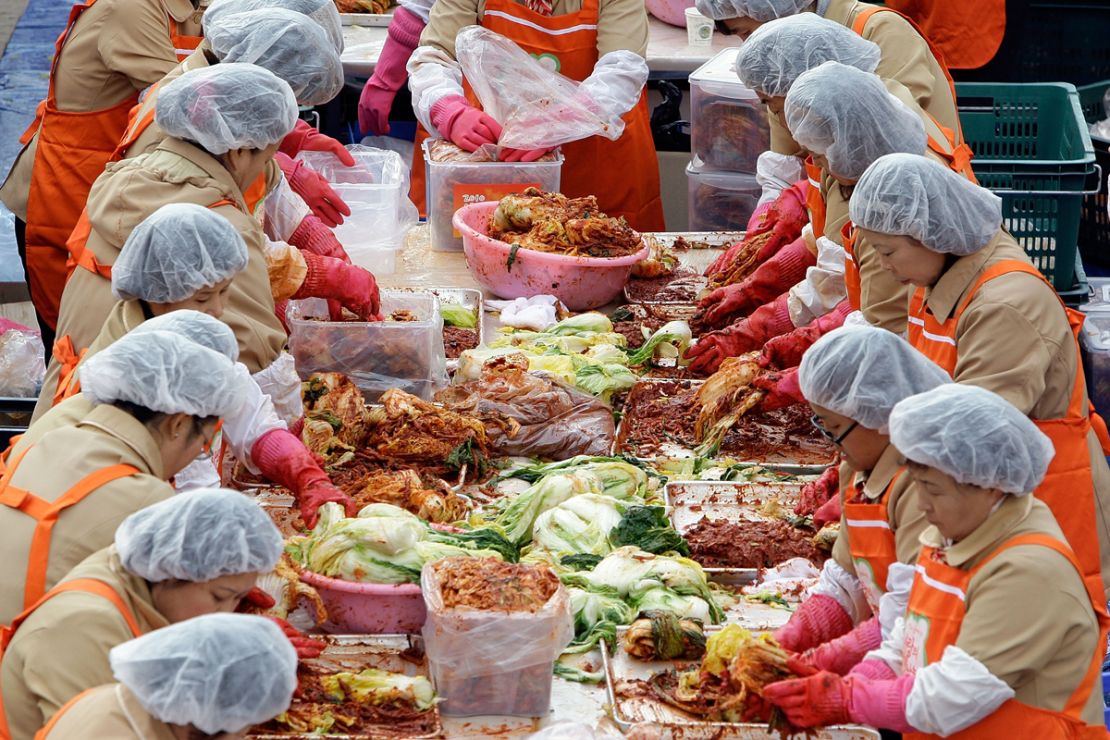
6. South Korea and Japan: The kimchi conflict
Korea and Japan have been at loggerheads over kimchi, a spicy dish made of fermented pickled vegetable dish with ginger, red pepper and garlic.
The culinary dispute broke out in 1996 when Japan proposed designating Japanese kimchi, called “kimuchi,” an official Atlanta Olympic food.
This ersatz version of kimchi, made to suit Japanese taste (it’s less spicy and has artificial flavor additives) concerns the South Koreans because the amount of Japanese kimuchi exported, which is cheaper, exceeds that of Korea.
In reaction to this alleged copycatting, Korea petitioned the World Health Organization and the Food and Agriculture Organization’s Codex Alimentarius commission to establish an international standard for kimchi.
Japan claimed that Korea has no monopoly on kimchi.
South Korean President Lee Myung-Bak called the international campaign “gastrodiplomacy.”
This beloved side dish is a national symbol that Koreans adulate.
“The taste of kimchi is the taste of your mother’s fingertips,” goes a well known Korean saying.
Korea even launched kimchi into space along with the first Korean astronaut in 2008, to promote its kimchi sovereignty.
“If a Korean goes to space, kimchi must go there, too,” said Kim Sung Soo, a Korea Food Research Institute scientist.
In 2013, UNESCO inscribed Kimjang – the making and sharing of kimchi in South Korea – as an Intangible Cultural Heritage of Humanity.
The first Korean movie screened in the United States – “Le Grand Chef – Kimchi War” – was about kimchi.
Seoul has a Kimchi Field Museum.
And in an effort to globalize Korea’s culinary trademark, citizens have launched research facilities on kimchi to develop “superior expertise on kimchi” and advance kimchi studies.
Try it
Star Chef, 417-2 Dogok-dong, Gangnam-gu, Seoul; +82 2529 8248; Tuesday-Sunday; 4 p.m.-12 a.m.
Taijuen, Masuzaka 4F, 1-12-1, Shibuya, Shibuya-ku, Tokyo; +81 3 6418 1129; daily, 5 p.m.-1 a.m.
MORE: Asia’s 10 greatest street food cities
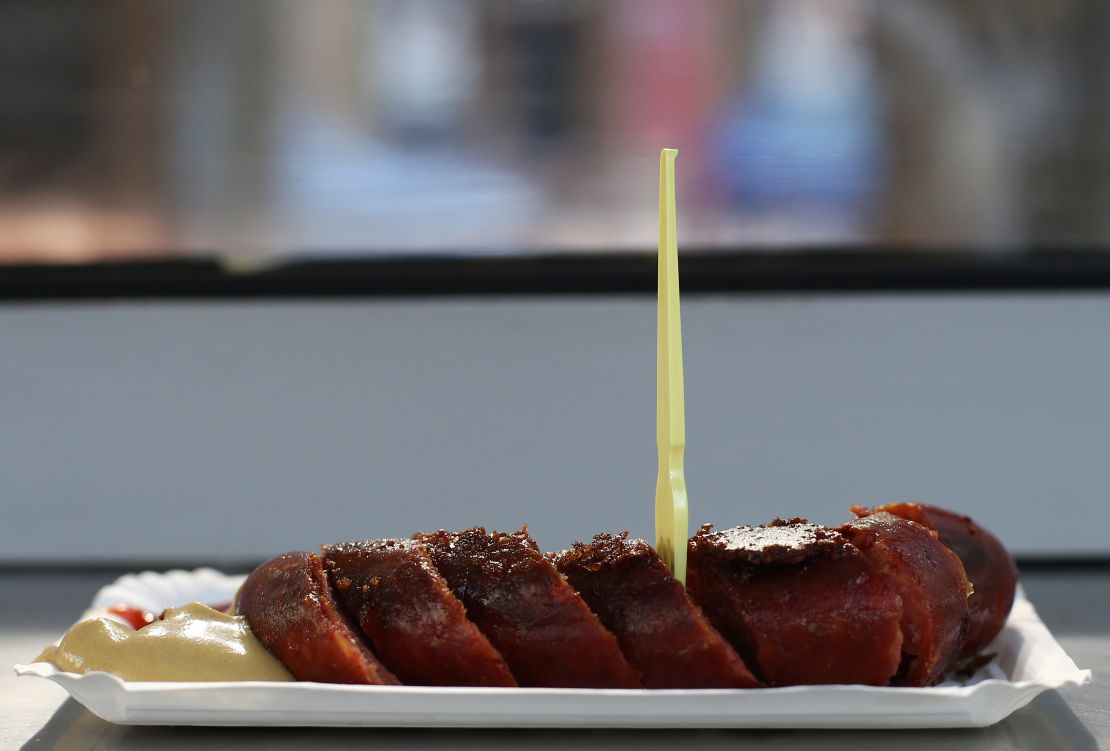
7. Slovenia and Austria: The pork sausage argument
“Laws are like sausages, it is better not to see them being made,” said German statesman Otto von Bismarck.
But what he omitted is that if you don’t write laws for your sausages, other countries might steal them.
A recent food rift concerns a spicy delicacy that Slovenia calls “Kranjska klobasa” and its neighbor Austria “krainerwurst.”
It’s made of minced pork and seasoned with garlic and pepper.
A diplomatic spat between the two nations erupted after Slovenes attempted to get the Krainer sausage EU special protected status (Protected Geographical Indication). It claimed the sausage was invented in the Kranjska region in northern Slovenia in the 19th century.
Vienna argued that the pork delicacy was first produced in Austria by the name kaesekrainer.
“We’re not going to allow anyone to deny us the krainer,” declared Austrian Agriculture Minister Niki Berlakovich.
The Austria Chamber of Commerce, the Patent Office and the Ministry of Agriculture united to sue Slovenia.
When it comes to sausages, it takes a brave man, or a Slovene, to mess with the Austrians.
They have the original Vienna frankfurter sausage, the slim long pork bratwurst, the slightly smoked sausage waldviertler, the thick and boiled burenwurst, the spicy bosna, the leberkas-semmel and more.
Austrians eat more than one kilo of sausage per capita per month on average.
The pork debate also sparked reactions over the web between gluttons.
“Let’s not repeat Balkan conflict over this,” wrote one Internet user.
“They are both wrong! Everybody knows the best sausage comes from Wisconsin, USA,” winks another.
Wisdom finally prevailed.
Unlike England’s Lincolnshire county, which introduced a “sausage tax,” Austria and Slovenia put an end to the conflict by accepting each other’s products in June 2012.
Slovenia said it would register its product with the European Union’s (EU) protected designation of origin, but agreed that Austrian producers could keep selling their versions under the German names.
Enter Croatia, which shortly after objected to Slovenia’s sausage claim, leaving its fate to the hands of the EU, where the issue is still tied up in the commission.
Try it
Gasthaus Murstuberl, Franziskanergasse 5, Graz, Styria, Austria; +43 3 1684 4535
Restaurant Meglič, Obrtniska 2 8210 Trebnje, Slovenia; +386 7304 4551; Tuesday-Saturday, 7 a.m.-10 p.m.; Sunday, 8 a.m.-9 p.m.; closed Monday
MORE: World’s best food festivals
First published July 2012, updated September 2014






